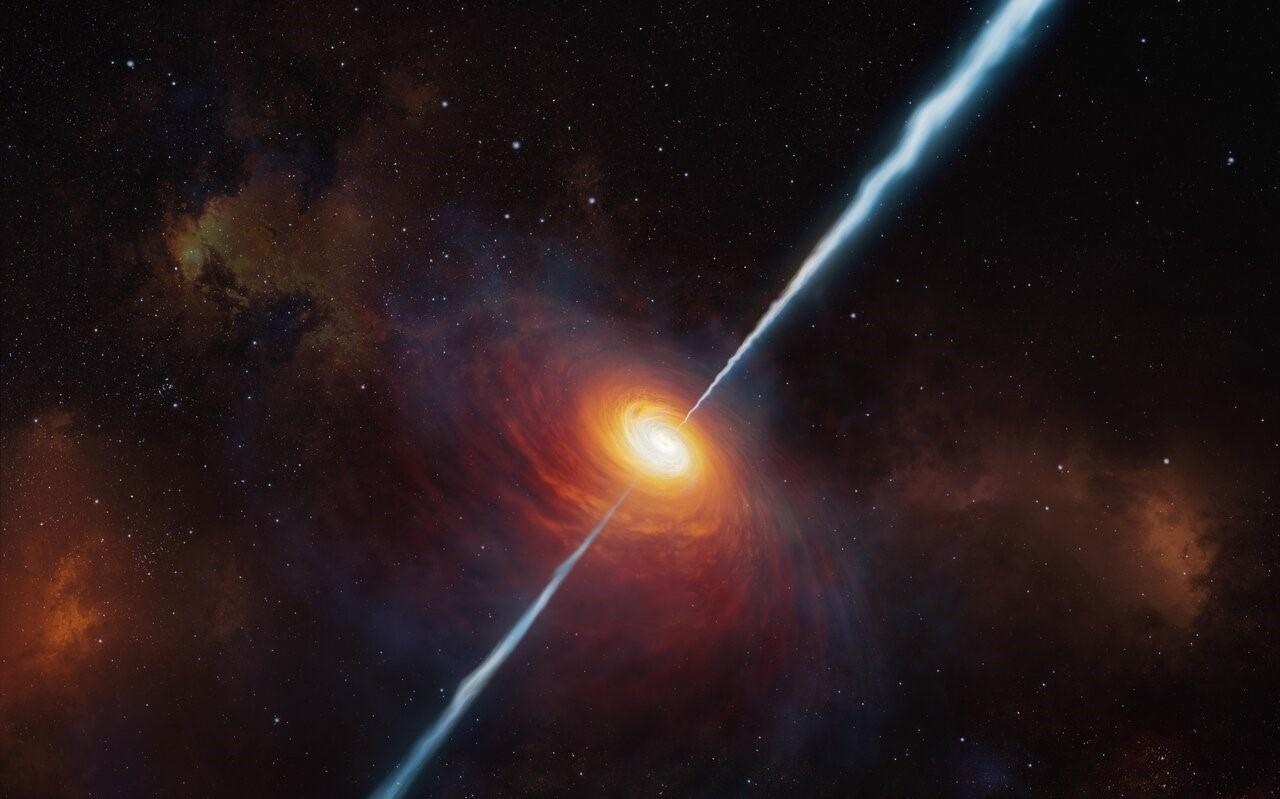An international group of astronomers has revealed the hundreds of sources emitting gamma-rays and discovered that a majority of them fall into a group of active galaxies called blazars.
 Artistic representation of an active galaxy jet. Image Credit: M. Kornmesser/ESO.
Artistic representation of an active galaxy jet. Image Credit: M. Kornmesser/ESO.
Tracking the low-energy counterparts of unidentified gamma-ray sources is one of the key challenges in modern gamma-ray astronomy. About one-third of all celestial objects detected by the Fermi satellite so far constitute unidentified sources, with the most recent gamma-ray project with unmatched capabilities for observing the high energy sky.
The study was published in The Astronomical Journal.
Blazars are the largest population of known gamma-ray sources, and astronomers anticipate that they can also classify a majority of the unidentified gamma-ray sources as blazars. However, it is only possible for astronomers to fully understand their nature by visualizing blazar candidates at visible frequencies.
Blazars are regarded as extremely rare, black hole-powered galaxies. They accommodate a supermassive black hole in their central regions where matters are swept out at virtually the speed of light through a strong jet pointing toward the Earth. Particles that are accelerated in these jets are capable of emitting light up to the most energetic gamma rays and thus can be observed by instruments loaded on the Fermi satellite.
The research team was headed by Dr. Harold Peña-Herazo from Mexico’s National Institute of Astrophysics, Optics, and Electronics (INAOE). The researchers studied hundreds of optical spectra collected by the Large Sky Area Multi-Object Fabre Spectroscopic Telescope (LAMOST) at the Xinglong Station in China.
LAMOST is part of the National Astronomical Observatories of the Chinese Academy of Sciences and offers unique chances to uncover the nature of blazar-like sources with the potential to be counterparts of unidentified gamma-ray sources.
Among all discoveries by the Fermi satellite, the researchers chose a sample of Blazar Candidates of Uncertain type (BCUs), which share many characteristics with blazars. However, to determine the actual classification and confirm their nature, optical spectroscopy observations are required.
With the help of available spectroscopic information in the LAMOST archive, the researchers classified tens of BCUs as blazars.
LAMOST data also permitted verifying the nature of hundreds of additional blazars by searching for emission or absorption lines used to determine their cosmological distances.
Gu Minfeng, Professor, Shanghai Astronomical Observatory, Chinese Academy of Sciences
A broad array of sources belong to the blazar class called BL Lac objects and possess a fully featureless optical spectrum. This poses challenges in measuring their cosmological distances. However, using the LAMOST, it was possible to reveal a few more of their kind with visible signatures in their optical spectra.
“Our analysis showed great potential for the LAMOST survey and allowed us to discover a few changing-look blazars,” stated Dr. Peña-Herazo, currently a postdoctoral fellow at the East Asian Observatory.
It is worth noting that the possibility of using LAMOST observations to estimate blazar cosmological distances is critical to studying this population, its cosmological evolution, the imprint in the extragalactic gamma-ray background light in the gamma-ray spectra, and the blazar contribution to the extragalactic gamma-ray background.
Francesco Massaro, Professor, University of Turin
Dr. Federica Ricci from Bologna University and INAF-OAS concluded, “I started working on this optical campaign and analyzing spectroscopic data in 2015, and nowadays, thanks to the observations available in LAMOST archive, we certainly made a significant step toward the identification of gamma-ray sources with blazars. Future perspectives achievable thanks to LAMOST datasets will definitively reveal the nature of hundreds of new blazars in the years to come.”
Journal Reference:
Peña-Herazo, H. A., et al. (2021) An Optical Overview of Blazars with LAMOST. II. Gamma-Ray Blazar Candidates and Updated Classifications. The Astronomical Journal. doi.org/10.3847/1538-3881/ac09e2.